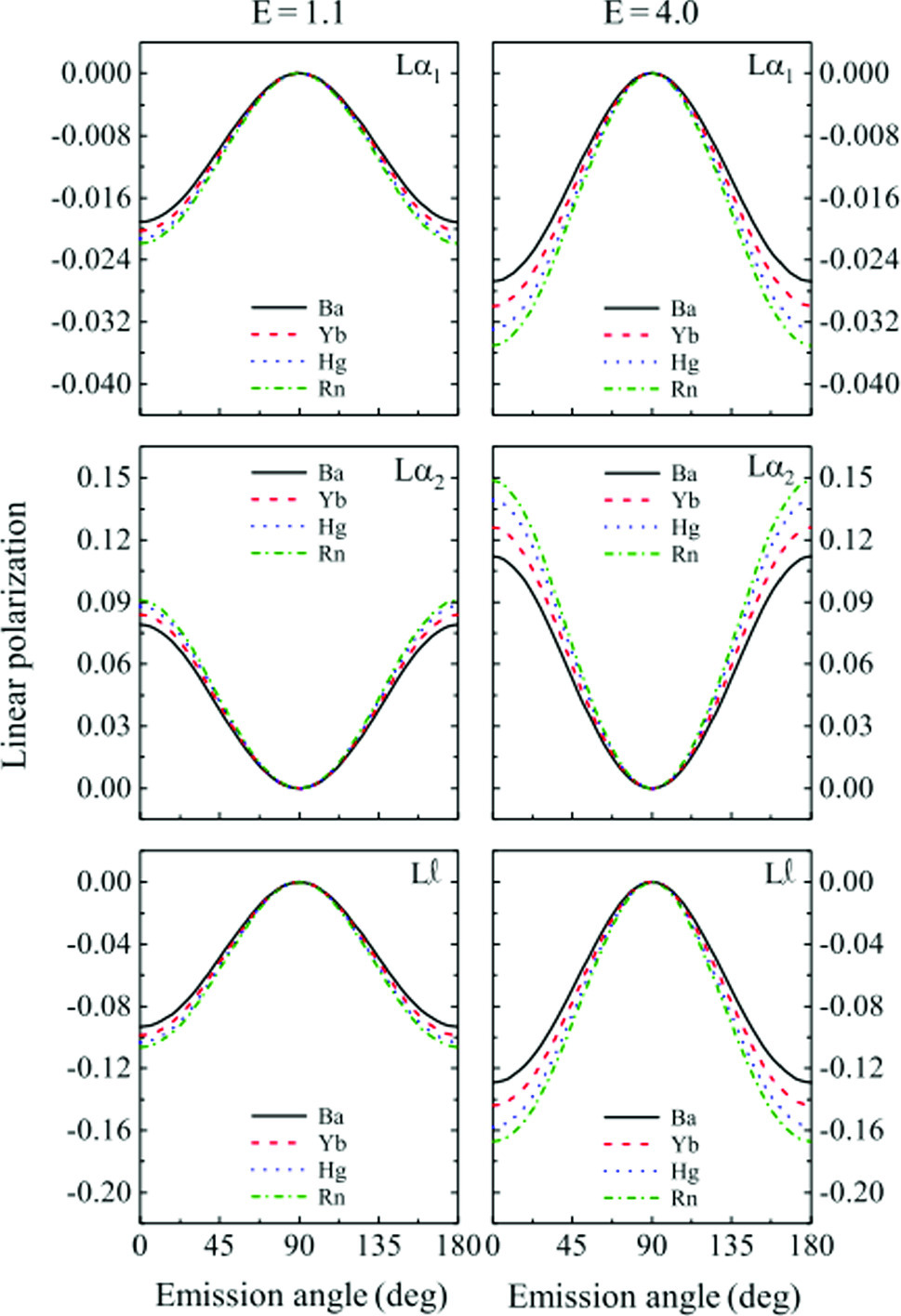https://doi.org/10.1140/epjd/s10053-024-00859-x
Regular Article - Atomic Physics
Angle-resolved linear polarization of characteristic lines following innershell  photoionization of atoms
photoionization of atoms
1
Key Laboratory of Atomic and Molecular Physics and Functional Materials of Gansu Province, College of Physics and Electronic Engineering, Northwest Normal University, 730070, Lanzhou, People’s Republic of China
2
Helmholtz-Institut Jena, Fröbelstieg 3, 07743, Jena, Germany
3
GSI Helmholtzzentrum für Schwerionenforschung GmbH, Planckstrasse 1, 64291, Darmstadt, Germany
4
Theoretisch-Physikalisches Institut, Friedrich-Schiller-Universität Jena, Max-Wien-Platz 1, 07743, Jena, Germany
Received:
27
January
2024
Accepted:
6
May
2024
Published online:
3
June
2024
In this paper, we aim to investigate angle-resolved linear polarization of the  ,
,  , and
, and  characteristic lines following innershell
characteristic lines following innershell  photoionization of selected neutral atoms with closed subshells by unpolarized or linearly polarized ionizing light within the framework of the density-matrix theory. To this aim, a relativistic single-configuration Dirac–Hartree–Fock approximation and the electric dipole approximation of the radiation fields are used to calculate the
photoionization of selected neutral atoms with closed subshells by unpolarized or linearly polarized ionizing light within the framework of the density-matrix theory. To this aim, a relativistic single-configuration Dirac–Hartree–Fock approximation and the electric dipole approximation of the radiation fields are used to calculate the  photoionization amplitudes of those atoms, the alignment parameter of the photoionized
photoionization amplitudes of those atoms, the alignment parameter of the photoionized  hole state, and thus the angle-resolved linear polarization of the characteristic lines. It is found that the angle-resolved linear polarization of the
hole state, and thus the angle-resolved linear polarization of the characteristic lines. It is found that the angle-resolved linear polarization of the  and
and  lines behaves very differently for different polarization cases of the ionizing light under consideration. In addition, at given ionizing photon energies the
lines behaves very differently for different polarization cases of the ionizing light under consideration. In addition, at given ionizing photon energies the  line is found to be the least linearly polarized for all different ionizing polarization cases, whereas the linear polarization of both the
line is found to be the least linearly polarized for all different ionizing polarization cases, whereas the linear polarization of both the  and
and  lines is much stronger and, actually, rather close to each other despite always having opposite polarization signs. As the nuclear charge and the ionizing photon energy increase, moreover, each of these lines becomes more and more linearly polarized, respectively.
lines is much stronger and, actually, rather close to each other despite always having opposite polarization signs. As the nuclear charge and the ionizing photon energy increase, moreover, each of these lines becomes more and more linearly polarized, respectively.
Copyright comment Springer Nature or its licensor (e.g. a society or other partner) holds exclusive rights to this article under a publishing agreement with the author(s) or other rightsholder(s); author self-archiving of the accepted manuscript version of this article is solely governed by the terms of such publishing agreement and applicable law.
© The Author(s), under exclusive licence to EDP Sciences, SIF and Springer-Verlag GmbH Germany, part of Springer Nature 2024. Springer Nature or its licensor (e.g. a society or other partner) holds exclusive rights to this article under a publishing agreement with the author(s) or other rightsholder(s); author self-archiving of the accepted manuscript version of this article is solely governed by the terms of such publishing agreement and applicable law.





